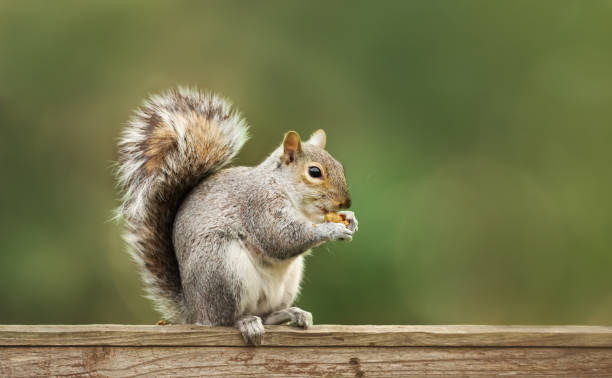There are two basic types of squirrels: tree squirrels and ground squirrels. Either type may require squirrel removal in Victoria if they get into your home, but tree squirrels tend to cause bigger problems in this regard. You may not recognize ground squirrels as squirrels because some species go by other names. For example, chipmunks, marmots, and prairie dogs are all considered ground squirrels. All types of squirrels gather and store food, for much the same reason, but they have different ways of doing it.
Why Do Squirrels Store Food?
During the winter, the food that squirrels eat becomes scarce. Tree squirrels don’t hibernate, so they put aside some of the food that they forage when food is plentiful to save for winter. At the same time, they also eat more to build up fat stores that they can rely on for energy as food becomes scarce in case the food they put away isn’t enough to last them until winter.
Ground squirrels don’t exactly hibernate during the winter. They go into extended periods of inactivity called torpor. As burrowing animals, they dig deep dens underground and hole up with several members of their extended family to keep warm while they sleep. During wakeful periods during the winter, ground squirrels can supplement meagre foraging with the food they have stored. Hot summer days can be hard on ground squirrels just as cold winter weather is, so they may draw on their food stores rather than foraging in the heat.
Where Do Squirrels Store Food?
Ground squirrels set aside areas within their underground burrows to store their food. These areas are dedicated to food storage, while sleeping, raising babies, and hiding from predators take place in other areas of the burrow.
Tree squirrels build nests in which to spend the winter. Typically, they make their nests in trees, but they can also end up in the attics of human households, a situation that typically requires wildlife removal on Vancouver Island to cope with. Tree squirrels’ nests are small, so they don’t store their food in the nests themselves. Rather, they find hiding places somewhere nearby for easy access. Often, tree squirrels bury their stores underground, but if there are hollows in their trees, they may use those for storage. Any place where the food is accessible but hidden is fair game. For example, squirrels in attics have been known to hide food in wall voids, while a squirrel in a garage may hide food in the engine compartment of a car in storage.
Do Squirrels Keep Food in Cheek Pouches?
Ground squirrels, including chipmunks and marmots, generally have cheek pouches, though there are some exceptions. Cheek pouches allow ground squirrels to load up a lot of food in their mouths at once while they are foraging and then carry it all back to their burrows at once. It’s as though nature has equipped them with built-in shopping bags. Ground squirrels don’t use cheek pouches for long-term storage, though. When they are done foraging, they put all their food in their stores once they get home.
Tree squirrels, including flying squirrels, do not have cheek pouches. It’s not entirely clear why, but because tree squirrels have to perform acrobatic feats high in the air, fully loaded cheek pouches may throw off their balance. Tree squirrels can carry food in their mouths to take it back to their stores, but because they don’t have cheek pouches, they cannot carry as much food at one time and have to make multiple trips.
Call Skedaddle for Squirrel Removal in Victoria
We perform humane wildlife removal on Vancouver Island for many types of animals, including squirrels. Learn more about the services we provide, including removal, cleaning the infected area and preventing them from returning. Give us a call if you have a problem with a wild animal in your home.



